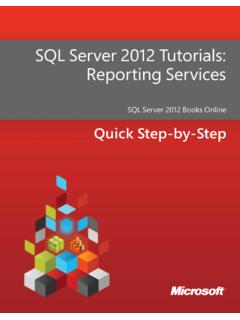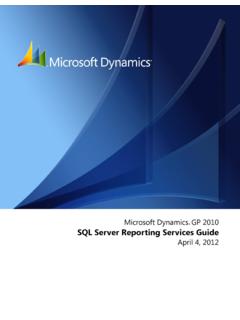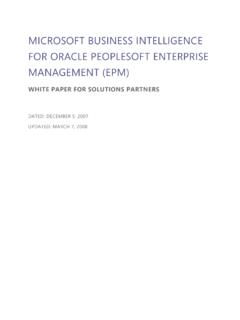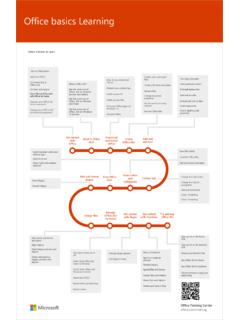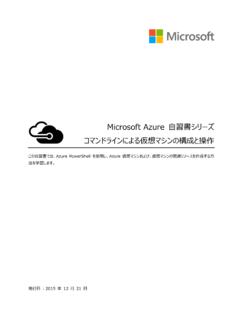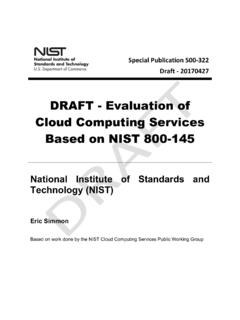Transcription of Microsoft Enterprise Cloud Red Teaming
1 Microsoft Enterprise Cloud Red Teaming Microsoft Enterprise Cloud Red Teaming P A G E | 02 Abstract This whitepaper discusses Microsoft s strategy and execution of Red Teaming and live site penetration testing against Microsoft managed Cloud infrastructure, services and applications. You will learn how Microsoft simulates real-world breaches, conducts continuous security monitoring and practices security incident response to validate and improve the security of Microsoft Azure and Office 365. In addition, you will gain visibility into procedures that customers should consider when deploying and managing Cloud -based assets in a secure manner. Red Teaming is above and beyond compliance accreditations or other industry requirements and provides Microsoft , and our customers, with the additional assurance that Microsoft Enterprise Cloud services are continuously performing security monitoring, testing, and updates to reflect the constantly changing threats that both customers and Microsoft face.
2 Additional Information Enterprise -scale penetration testing requires the involvement of multiple parties within an organization. Since this document covers procedural guidance, it is intended for those responsible for evaluating environments, systems and processes for security risks. Note, that the details provided herein are an overview of how security teams for Microsoft Azure and Office 365 conduct Red Teaming and live site penetration testing, not instructions on how customers should attack Microsoft s Cloud infrastructure, platforms or services. While Microsoft conducts regular penetration testing to improve Cloud security controls and processes, we understand that security assessments are also an important part of our customers' application development and deployment activities.
3 Therefore, we have established a policy enabling customers to conduct authorized penetration testing on their applications such as those hosted in Microsoft Azure. Since such testing can be indistinguishable from a real attack, it is critical that customers conduct penetration testing only after obtaining approval in advance from Microsoft Azure Customer Support. Customer penetration testing must be conducted in accordance with Microsoft s terms and conditions. Requests for penetration testing must be submitted with a minimum of 7-day advanced notice. For more information, please refer to the Microsoft Azure Trust Center: Published November 2014 (c) 2014 Microsoft Corporation. All rights reserved. This document is provided "as-is.
4 " Information and views expressed in this document, including URL and other Internet Web site references, may change without notice. You bear the risk of using it. Some examples are for illustration only and are fictitious. No real association is intended or inferred. This document does not provide you with any legal rights to any intellectual property in any Microsoft product. You may copy and use this document for your internal, reference purposes. Microsoft Enterprise Cloud Red Teaming P A G E | 03 Table of Contents 1 INTRODUCTION .. 4 Microsoft Enterprise Cloud RED Teaming .. 4 BEYOND PREVENTION .. 4 2 TRADITIONAL SECURITY METHODOLOGY .. 5 NEW AND EMERGING THREATS .. 6 3 ASSUME BREACH METHODOLOGY.
5 7 ASSUME BREACH EXECUTION .. 8 WARGAMES .. 9 RED Teaming .. 10 The Red Team .. 10 The Blue Team .. 12 Red vs. Blue .. 14 Red Team Breach Post-Mortem .. 15 4 SECURITY PRINCIPLES ..15 5 SUMMARY ..16 6 REFERENCES AND FURTHER READING ..17 7 APPENDIX ..18 DIFFERENCE BETWEEN RED Teaming AND PENETRATION TESTING .. 18 WHY ATTACK PRODUCTION? .. 19 RUNNING A RED TEAM .. 19 Microsoft Enterprise Cloud Red Teaming P A G E | 04 1 Introduction Organizations can better prepare for the impact of current and future threats by simulating real-world attacks and exercising Tactics, Techniques and Procedures (TTPs) that determined and persistent adversaries use during breaches. Rather than simply seeking to keep security incidents from occurring, it is critical to assume that a security incident can and will occur.
6 The information gained from Red Teaming and live site penetration testing exercises helps to significantly strengthen defenses, improve response strategies, train defenders, and drive greater effectiveness of the entire security program. Organizations cannot comprehensively identify gaps in security detection and response by solely focusing on breach prevention strategies. Understanding how to not only protect but also to detect and respond to breaches is just as important if not more so than taking action to prevent a breach from occurring in the first place. By planning for the worst-case scenarios, through wargames (tabletop attack and penetration) and Red Teaming (real-world attack and penetration), organizations can develop the necessary capabilities to detect penetration attempts and significantly improve responses associated with security breaches.
7 Microsoft Enterprise Cloud Red Teaming This whitepaper will outline how Microsoft utilizes Red Teaming , a form of live site penetration testing, against Microsoft managed infrastructure, services and applications. You will also learn how Microsoft simulates real-world breaches, continuously monitors security and practices security incident response to test and improve the security of Microsoft Azure and Office 365 (O365). Note, however, that no end-customer data is deliberately targeted during Red Teaming and live site penetration testing. The tests are against Microsoft Azure and O365 infrastructure and platforms as well as Microsoft s own tenants, applications and data. Customer tenants, applications and data hosted in Microsoft Azure or O365 are never targeted.
8 Beyond Prevention Security prevention strategies and technologies cannot guarantee safety from every attack. Given today s threat landscape, it is vital to acknowledge that a breach has either already occurred or that it s only a matter of time until it will. It is more likely that an organization has already been compromised, but just hasn t discovered it yet. Operating with this assumption will reshape detection and response FUNDAMENTALLY, IF SOMEBODY WANTS TO GET IN, THEY'RE GETTING ACCEPT THAT. WHAT WE TELL CLIENTS IS: NUMBER ONE, YOU'RE IN THE FIGHT, WHETHER YOU THOUGHT YOU WERE OR NOT. NUMBER TWO, YOU ALMOST CERTAINLY ARE PENETRATED. MICHAEL HAYDEN FORMER DIRECTOR OF NSA & CIA Microsoft Enterprise Cloud Red Teaming P A G E | 05 strategies in a way that pushes the limits of any organization s infrastructure, people, processes, and technologies.
9 According to Verizon's 2014 Data Breach Investigation Report, in roughly 80% of the cases the breached organization did not detect the compromise (pg. 12, ). Instead, they were notified of the breach by an external party such as a customer, law enforcement, third-party service, or external fraud detection agency. On top of that, these metrics are only taken from incidents where the attacker was eventually detected! They do not include the cases where the attacker has so far gone undetected. In the sections that follow, we will discuss the move to a new security strategy that is being used across Microsoft s Cloud services, including Microsoft Azure and Office 365. This security strategy, called Assume Breach, is both a methodology and cultural shift that alters the basic premise of design, engineering and operations by assuming that attackers have already exploited vulnerabilities, gained privileged access, and are actively persistent on live production services.
10 2 Traditional Security Methodology Traditional security methodologies have largely been focused on prevention. Prevention is a defensive strategy aimed at eliminating vulnerabilities and thereby mitigating security breaches before they happen. In Microsoft s Online Services portfolio (which includes Microsoft Azure, Office 365, CRM Online, and others), this involves continuous improvements to security processes with our Security Development Lifecycle (SDL) and Operational Security Assurance (OSA) programs. Threat Modeling, static code analysis and security testing are useful in enumerating, reducing, and managing attack surfaces but they do not eliminate all security risks. An example of a prevention strategy is how Microsoft limits operator/administrator access to employees who have a demonstrated need for access and who meet eligibility requirements (for example, passed a background check, met all compliance and security requirements, in a job function/role that requires access, etc.)



